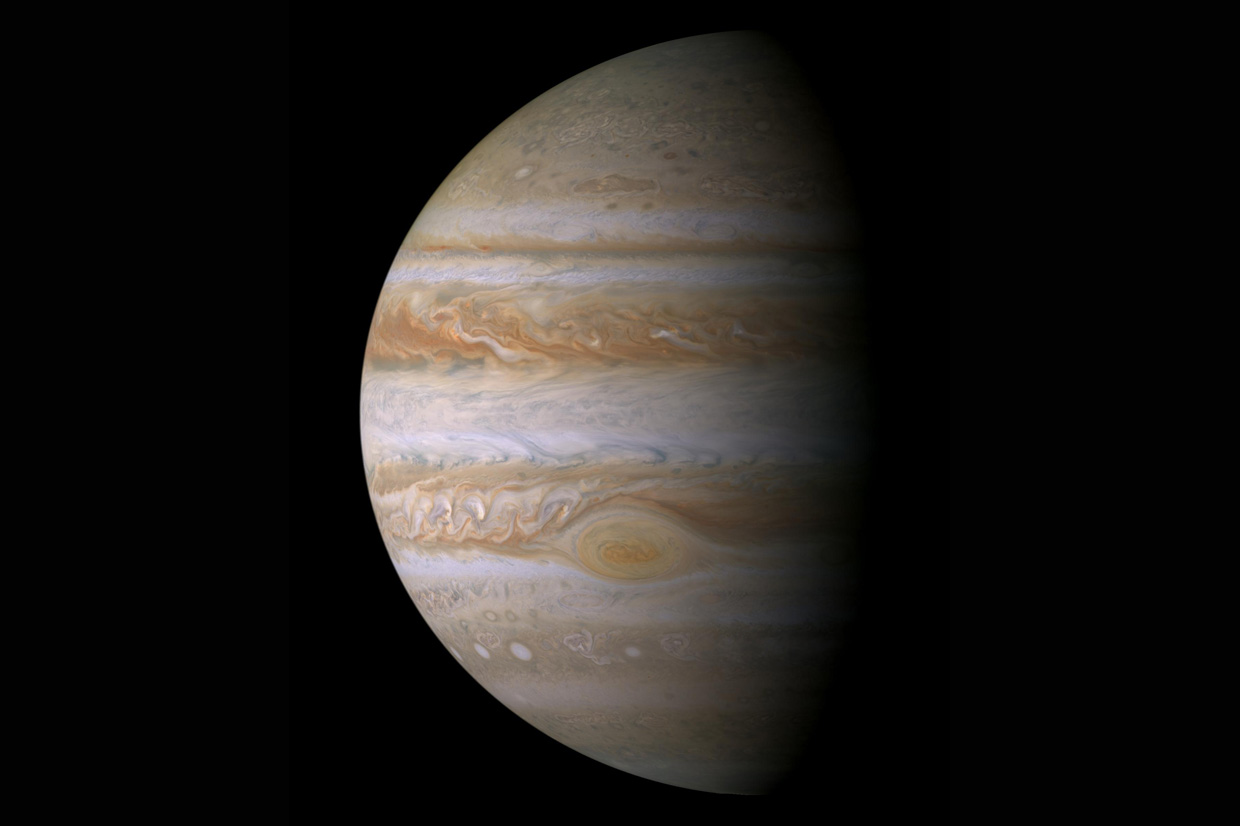
Jupiter's moon may have necessary ingredients for developing life.
Beneath the icy covering on Jupiter’s moon Europa, could there be an Earth-like ocean that just might be developing life forms, much like our own ocean did eons ago? That is a question that is intriguing scientists as they are learning more and more about the distant moon, according to discovery.com.
Researchers believe the moon has a subsurface ocean, that is protected from bombarding space radiation by a thick covering of ice, and they also suspect the ocean contains many of the same chemicals that sparked life on Earth. Now, some scientists are beginning to believe the nutrients in the water could even sprout multi-celled organisms as well.
Of course at this point it is all theory, but Steve Vance, a planetary scientist at NASA’s Jet Propulsion Lab (JPL) in Pasadena, California, said they were studying an alien ocean by using methods that were devised to study the movement of nutrients and energy in oceans on the Earth.
“The cycling of oxygen and hydrogen in Europa’s ocean will be a major driver for Europa’s ocean chemistry and any life there, just it is on Earth,” added Vance.
The scientists believe Europa contains a rocky core, complete with fissures that have filled with liquid water. The interactions between the water and the minerals in the core forms new minerals, and at the same time, releases huge amounts of hydrogen into the air.
As radiation pummels the icy surface, it breaks down the chemical bonds of the water, producing oxidants, molecules of oxygen atoms that combine with other chemicals. Kevin Hand, also of JPL, said the oxidants are similar to a positive terminal of a battery, and the chemicals on the seafloor are like the negative terminals.
“Whether or not life and biological processes complete the circuit is part of what motivates our exploration of Europa,” continued Hand.
In short, it may appear that Europa has a similar situation to what the Earth had at the beginning of life on our planet. And if it is found to be true, how many more worlds are out there with the same possibilities?
The findings from this research were published in the journal Geophysical Research.

Leave a Reply